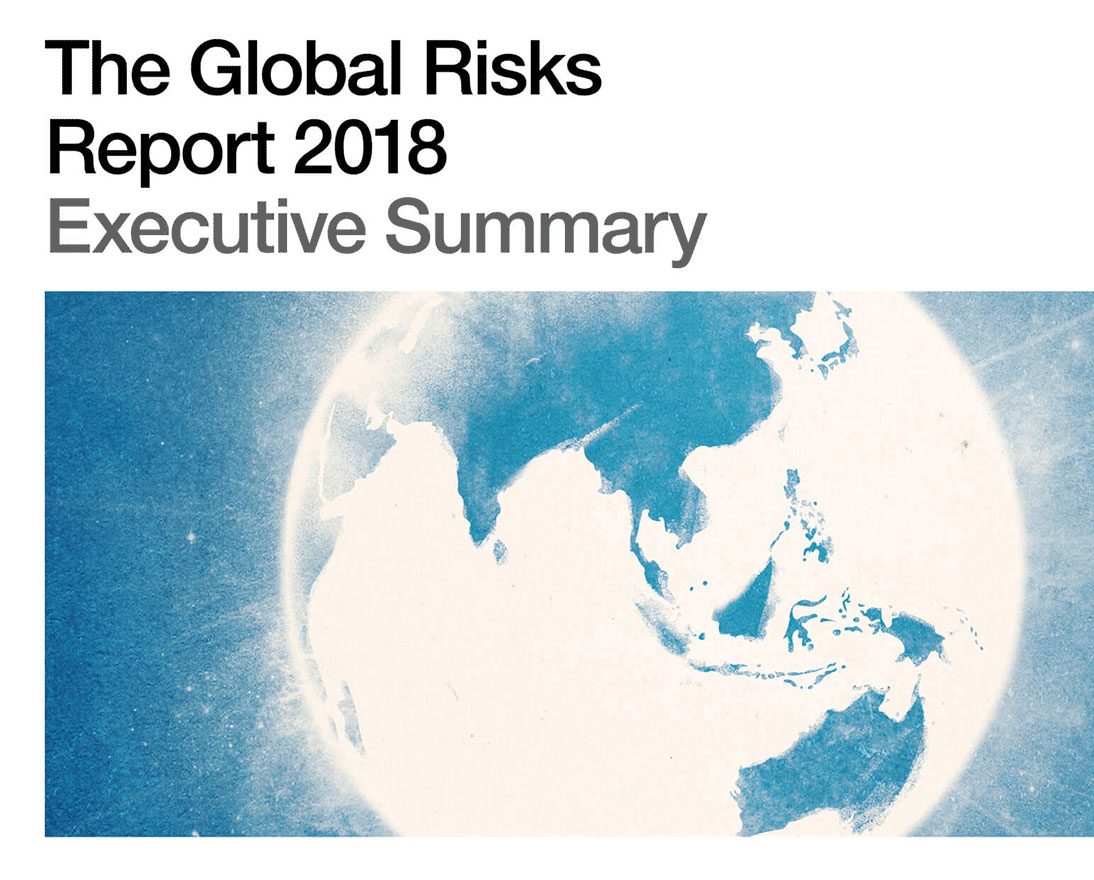What's keeping risk experts up at night?
Digital, data and cyberVideoMarch 5, 20184 min read
Watch our video to learn more about the 2018 global risks landscape and its potential impact to your business.
We are living in an era of unprecedented technological, scientific and financial resources. With this, comes a remarkable opportunity to address the increasingly complex systemic risks we face.
Yet we also see the world continues to live dangerously...and, there is very little hope that 2018 will be different.
In review of this year’s Global Risks Report, published by the World Economic Forum in collaboration with leading global institutions including Zurich Insurance Group, many challenges and key risks for the year ahead are identified, also suggesting that the urgency of taking action has intensified.
The Report points to several areas of significant concern in the areas of environmental, technological, geopolitical, societal and economic risks dimensions.
- First, we are pushing our degraded planet to the brink;
- Second, our defenses against catastrophic cyber risks are being seriously tested;
- Third, our growing vulnerability to systemic risks is confirmed with signs of strain in many of the systems on which we rely;
- Fourth, growth alone will not repair the social fabric;
- Lastly, the risks of international conflicts are increasing.
Cyber risks intensify
Taking a closer look at the technological risks insights of the Report, cyber-attacks and massive data fraud both appear in the list of the top five global risks by perceived likelihood.
Attacks are increasing, both in prevalence and disruptive potential. Cyber breaches recorded by businesses have almost doubled in five years, “dark net” markets for malware goods and services have seen a resurgence. The financial costs of cyber-attacks are also rising. The cost of cybercrime to businesses over the next five years is expected to be $8 trillion, the equivalent to the current GDP of Germany, France and the UK combined.
Beyond its financial cost, there is a growing trend to use cyber-attacks to target critical infrastructure and strategic industrial sectors, raising fears that in a worst-case scenario attackers could trigger a breakdown in the systems that keep societies functioning.
Attacks such as WannaCry, for example, disrupted critical and strategic infrastructure across the world, including government ministries, railways, banks, telecommunications providers, energy companies, car manufacturers and hospitals.
Most attacks on critical and strategic systems have not succeeded—but the combination of isolated successes with a growing list of attempted attacks suggests that risks are increasing.
How can businesses respond to these global risks?
The increased interconnectivity, complexity and potential impact of global risks are here to stay. In such a context, caring for business and our future means considering everything that could affect it. Companies need to look at those global risks that could have a direct or indirect impact on their business, and define a holistic approach to managing those risks.
Managing the connectivity of risks is a recipe of success for the future of risk management. A future that’s not only based on risk transfer, but also – and more and more – includes greater oversight of the strategic risks and risk management approaches that are integrated to address the risk connectivity, and that are backed up by top-quality data insights and intelligence. Responding to global risks needs to start at the highest level in companies. This means integrating risk management into the strategic planning process of the corporation.
For that, it is important to understand the triggers, trends and scenarios to look out for, and to prepare for the possible consequences.
Are you and your business prepared for 2018? Watch our video, featuring Alison Martin, Group Chief Risk Officer, Zurich Insurance Group, to learn more about the 2018 global risks landscape and its potential impact to your business.
Access the full Report and Executive Summary PDF files for more details.











